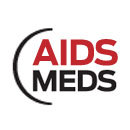RE: STIMULATION OF HIV-SPECIFIC IMMUNE CELLS IS NECESSARY TO ELIMINATE LATENT HIV

Disulfiram May Not Significantly Reduce Latent HIV Reservoirs In People With HIV (CROI 2012)
Preliminary results from an ongoing small study suggest that disulfiram, a drug used to treat alcoholism that has recently been investigated as a latent HIV activator, is safe and well tolerated. However, the results also showed that disulfiram may not significantly reduce the size of the latent HIV reservoir in HIV-positive adults taking antiretrovirals.
“There was a slight increase in viral load but it does not reach statistical significance,” said Dr. Adam Spivak, from the University of Utah School of Medicine and one of the study investigators.
“We did see a modest 14 percent decline in the size of the latent reservoir…but for the most part it pretty much stayed the same,” he added.
The results were presented earlier this month at the 19th Conference on Retroviruses and Opportunistic Infections (CROI) in Seattle.
Latent HIV is HIV that is not actively replicating. Since antiretroviral drugs usually work by blocking replication, they do not work on latent HIV. Many researchers believe that activating latent HIV is the key to curing HIV infection; once HIV is activated and begins replicating, scientists hope it will become susceptible to elimination with antiretroviral therapy.
Research has shown that disulfiram (Antabuse) successfully activates latent HIV in infected cells in the laboratory. However, its efficacy in activating latent HIV in people is still unknown.
In this study, researchers are investigating whether disulfiram is capable of activating latent HIV in adults whose HIV is well-controlled with antiretroviral therapy.
The study includes 14 HIV-positive adults, each of whom received 500 mg disulfiram once a day for two weeks. All participants were on antiretroviral therapy and had had undetectable amounts of HIV in the blood for at least a year.
Researchers measured the amount of HIV RNA, a measure of latent HIV, in participants’ blood before and up to 12 weeks after giving the participants disulfiram.
Results showed that HIV RNA increased 53 percent during treatment and 88 percent after treatment; however, the researchers said neither of these increases are significant.
Overall, disulfiram decreased the size of participants’ latent HIV reservoirs by 14 percent, which was not statistically significant.
Among 57 percent of study participants who had blood sampled at one to two hours after the first dose of disulfiram, HIV RNA increased 4.5-fold, which, according to the researchers, suggests that drugs affecting the latent HIV reservoir may have a rapid onset.
The researchers are planning additional studies that measure HIV RNA levels at multiple time points during the first day participants receive disulfiram to further investigate its efficacy at shorter time intervals.
The researchers reported that disulfiram was well tolerated and that there were no serious side effects.
For more information or the study abstract, visit the CROI2012 website HERE.



 U.S. Representative Maxine Waters (D–Calif.) is sponsoring a bill to require health insurance plans to provide coverage for routine HIV tests, The New York Times reports. The
U.S. Representative Maxine Waters (D–Calif.) is sponsoring a bill to require health insurance plans to provide coverage for routine HIV tests, The New York Times reports. The 


